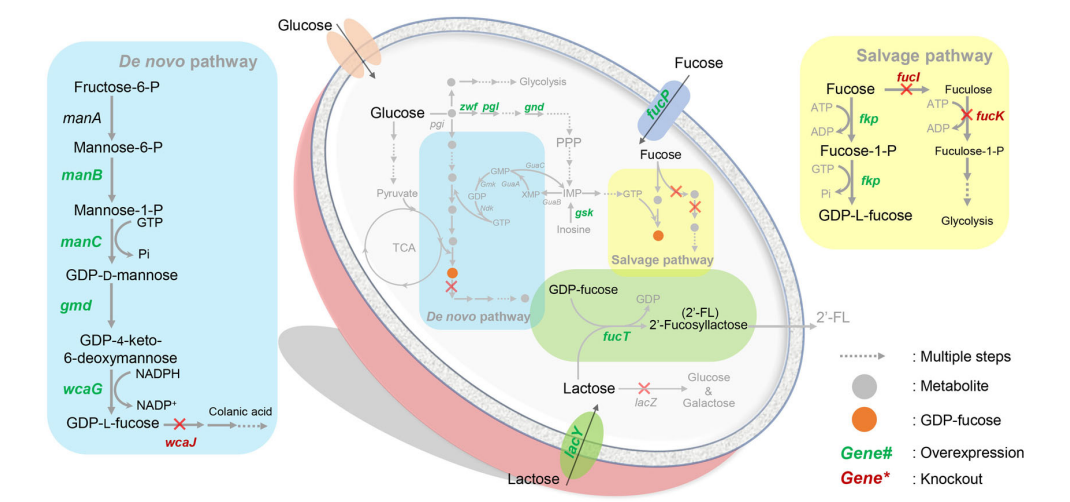- 539
- HENGLU NEWS
2'-Fucosyllactose (2'-FL) is a type of human milk oligosaccharides (HMOs) that plays a vital role in infant nutrition, providing numerous health benefits such as strengthening the immune system, supporting gut health, and promoting brain development. 2'-Fucosyllactose is the most abundant oligosaccharides in human milk, but its large-scale production has proven to be a challenging endeavor. Due to its complexity, producing 2'-Fucosyllactose on an industrial scale requires advanced methods. Several production methods have been developed, each with its advantages and disadvantages. This article will explore these methods and highlight the advances in 2'-Fucosyllactose production.
The chemical synthesis of 2'-Fucosyllactose is one of the oldest approaches to produce this oligosaccharide. However, this method presents several challenges, making it less suitable for large-scale production.
Chemical synthesis relies on glycosylation reactions to assemble the 2'-Fucosyllactose molecule. These reactions are complicated, requiring multi-layered protection and deprotection protocols to ensure the correct bonding between sugar units. This complexity stems from the need to protect certain functional groups during one reaction step and then remove the protective groups afterward to proceed with the next step. While theoretically viable, this makes the process cumbersome and inefficient.
The chemical method involves the use of costly reagents, many of which are toxic and hazardous to both the environment and human health. This not only increases the cost of production but also introduces significant safety concerns for manufacturers. Additionally, the use of toxic solvents in these reactions poses challenges in terms of waste disposal and environmental regulations.
One of the biggest drawbacks of the chemical method is its low stereoselectivity, which refers to the ability of the reaction to produce the desired 2'-Fucosyllactose isomer consistently. Achieving high stereoselectivity in glycosylation reactions is difficult, and this often leads to low yields. Moreover, the final product is typically a mixture of different isomers, requiring further purification steps, which add to the cost and complexity of the process.
Secondly, the whole cell biosynthesis method uses genetically modified microorganisms to produce 2'-Fucosyllactose in a more efficient and environmentally friendly manner.
This method involves engineering microbial cells, such as Escherichia coli, to express the enzymes needed for 2'-Fucosyllactose synthesis. These enzymes facilitate the transfer of fucose to lactose, forming 2'-Fucosyllactose. One key advantage of this method is that it allows the direct production of 2'-Fucosyllactose in a single step, without the need for complex chemical reactions or expensive reagents.
Compared to the chemical method, whole cell biosynthesis is much more cost-effective. The microorganisms used can be cultured on a large scale using inexpensive growth media, and the process does not require toxic solvents or costly reagents. This makes it a more attractive option for industrial production.
One limitation of the whole cell method is the availability of the necessary substrates, such as GDP-fucose. The cost and availability of these substrates can impact the overall efficiency of the process. Additionally, while microbial production is generally more efficient than chemical synthesis, optimizing the yield of 2'-Fucosyllactose still requires fine-tuning the metabolic pathways within the cells, which can be a time-consuming and complex task.

Thridly, enzymatic synthesis is an increasingly popular approach for 2'-Fucosyllactose production, offering several advantages over chemical and whole-cell methods.
Enzymatic synthesis involves using purified enzymes to catalyze the glycosylation reactions needed to produce 2'-Fucosyllactose. Typically, two types of enzymes are required: glycosyltransferases, which transfer sugar moieties to specific acceptor molecules, and α-L-fucosidases, which catalyze the transfer of fucose to lactose, forming 2'-Fucosyllactose.
One of the main advantages of enzymatic synthesis is its high specificity. Unlike chemical methods, enzymatic reactions are highly selective, producing the desired 2'-Fucosyllactose isomer with minimal by-products. This leads to higher yields and reduces the need for complex purification steps. Furthermore, enzymatic synthesis uses natural substrates, making the process more environmentally friendly and sustainable.
While enzymatic synthesis is more efficient and specific than chemical methods, it is limited by the availability and cost of the required enzymes. Glycosyltransferases and other enzymes used in 2'-Fucosyllactose production can be expensive to produce, which raises the overall cost of the process. Additionally, the stability of these enzymes during large-scale production can be a concern, as enzyme degradation can reduce the efficiency of the reaction.
Among the various methods for 2'-Fucosyllactose production, enzymatic synthesis stands out as one of the most promising due to its high specificity, efficiency, and use of natural substrates. While challenges remain in terms of enzyme cost and stability, advancements in biotechnology are making enzymatic synthesis more feasible for large-scale production. Companies like Henglu Biotech are leading the way in using enzymatic synthesis to produce 2'-Fucosyllactose, capitalizing on its advantages to meet the growing demand for this important oligosaccharide.
As research and development in this field continue, the enzymatic synthesis of 2'-Fucosyllactose is likely to become the preferred method for large-scale production, offering a cost-effective, environmentally friendly, and efficient solution for producing this essential component of human milk.
Citation:
[1]Zhu, Y., Wan, L., Li, W., Ni, D., Zhang, W., Yan, X., & Mu, W. (2022). Recent advances on 2′-fucosyllactose: physiological properties, applications, and production approaches. Critical Reviews in Food Science and Nutrition, 62(8), 2083–2092.
[2]Shi, R., & Jiang, Z. Q. (2020). Progress and prospect of enzymatic synthesis of 2’-fucosyllactose. Synthetic Biology, 1(4), 481.
[3]Li, N., Xu, K., Li, L., Yu, H., & Xu, Z. (2021). Research progress on physiological efficacy and preparation methods of 2’-fucosyllactose. Food and Fermentation Industry, 47(23), 265-271.



